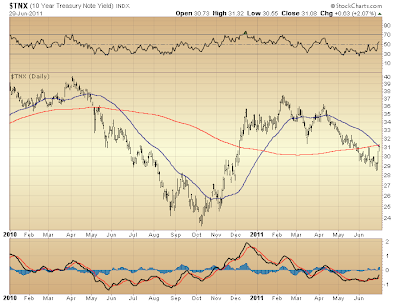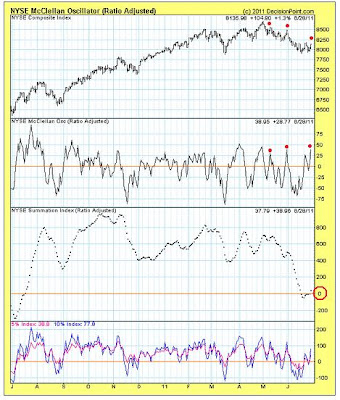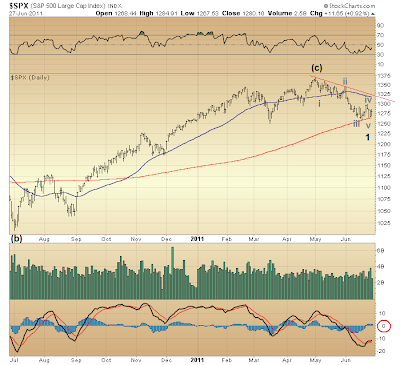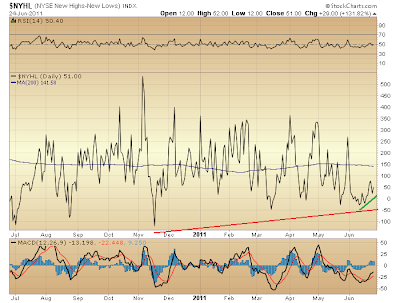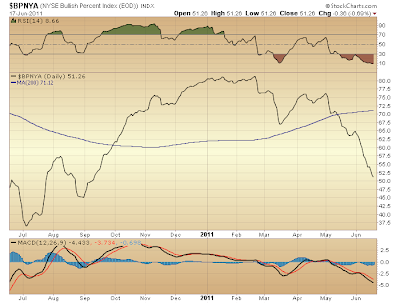The imbalance of recent negative sentiment, relative strength and momentum no doubt is being repaired on the back of this week's rally — itself, an unusually strong burst occurring amidst the weakest technical backdrop since last year's "flash crash."
Yet beyond this repair, nothing technically compelling is accompanying the market's recovery. If anything, only further indications of underlying weakness are being revealed.

For example, volume accompanying advancing periods since June 16th bottom is but more muted than advancing periods previous — indeed, something of a consistent trend since March '09 bottom, and now only the more curious. Oh wall of worry, where art thou?
Why, below we see that long equity hedging at "bottom" inflection points this year — late-January, mid-March and mid-June — in the vicinity of SPX 1275 have been consistently increasing, yet the question is whether this will prove sufficient, now that the market's momentum (bottom panel of $SPX chart above) was turned to the negative in June...

An ominous setup the CBOE Put/Call Ratio presents (see early-May 2010). Then, considering volatility's marked contraction this week, all the more ominous is the technical backdrop.
Likewise, with daily breadth relatively subdued this week, yet averaged over the past ten days rather reflecting a consensus relatively certain about the market's positive prospects, what awaits in truth might reasonably be thought anything but.
By every technical measure I consider in these parts, the market appears poised to disappoint, and this even in a most dramatic fashion.
Watch index momentum. Its present rise from the negative to approach its "0" line will fail crossover only if the market turns south, and probably in a big way, over the next few days.
Without going into details tonight, it appears top to the market's advance since late last Friday (6/24) is nearly at hand. Should my negative outlook here — still supposing June 16th bottom will be taken out, if not left in the dust — reflect a correct read of underlying technical conditions, then the market's 5-wave advance since last last Friday is seen forming the "c" wave of an a-b-c corrective wave up, this recovering some of the market's losses from May 1st top. Once this corrective wave higher completes, it's right back down she goes. And I will say it again: the trip just might turn nasty.

* * * * *
© The Risk Averse Alert — Advocating a patient, disciplined approach to stock market investing. Overriding objective is limiting financial risk. Minimizing investment capital loss is a priority.
Analysis centers on the stock market's path of least resistance. Long-term, this drives a simple strategy for safely investing a 401(k) for maximum profit. Intermediate-term, investing with stock index tracking-ETFs (both their long and short varieties) is advanced. Short-term, stock index options occasionally offer extraordinary profit opportunities when the stock market is moving along its projected path.
Nothing is set in stone. Nor is the stock market's path of least resistance always known. More often than not, there are no stock index option positions recommended.
 There's an easy way to boost your investment discipline...
There's an easy way to boost your investment discipline...Get Real-Time Trade Notification!

